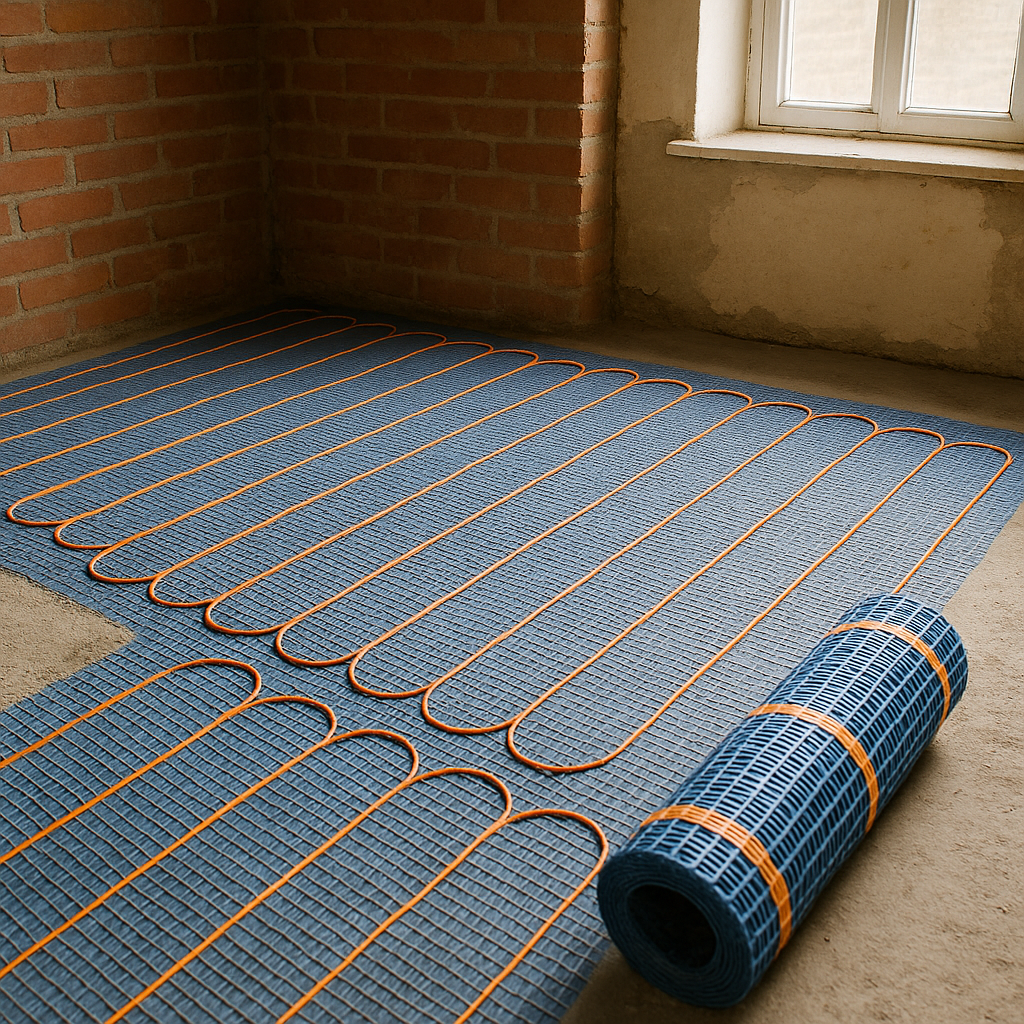How to Retrofit Comfort and Efficiency into Traditional Properties
Many homeowners across the UK live in older houses that were built long before modern insulation standards or heating technologies existed. While character and charm are often strong selling points, traditional properties can present challenges when it comes to achieving a comfortable and energy-efficient home.
One question we hear often is whether underfloor heating can be installed in older homes. The answer is yes, but it requires careful planning and the right approach. In this article, we look at the most common challenges and explain how they can be overcome.
Floor Height Constraints
One of the first considerations in older homes is floor height. Many traditional properties have limited clearance between floors and ceilings, which can make some homeowners hesitant about adding a heating system beneath the floor surface.
Electric underfloor heating mats are an excellent solution here because of their slimline design. Unlike traditional water-based systems, they require minimal build-up, meaning they can be installed with very little impact on floor height. When combined with suitable floor finishes such as tiles, vinyl or laminate, the result is a discreet system that blends seamlessly into existing spaces.
Subfloor Improvements and Insulation Upgrades
Another challenge with older homes is heat loss through poorly insulated floors. Without proper insulation, much of the heat generated can escape downwards rather than rising into the room.
Adding high-performance insulation boards beneath the heating mats is the most effective way to combat this. Not only does this prevent downward heat loss, but it also reduces warm-up times and improves overall efficiency. In some cases, strengthening or levelling the subfloor may also be advisable to provide a secure and durable base for both the insulation and the heating system.
Electrical Load and Wiring Upgrades
Older properties often have outdated wiring or consumer units that were never designed to handle modern electrical demands. Before installing electric underfloor heating, it is essential to ensure that the property’s electrical system can support the additional load safely.
A qualified electrician should always be consulted to assess capacity and, if required, upgrade circuits or install dedicated connections for the heating system. This step not only ensures compliance with current regulations but also provides long-term safety and reliability.
Best Rooms to Start With
For homeowners retrofitting underfloor heating, it often makes sense to begin with specific rooms rather than attempting the whole house in one project. Bathrooms and kitchens are popular starting points, as these spaces typically benefit the most from warm floors and are often renovated more frequently.
Extensions and loft conversions are also ideal candidates, as they provide the opportunity to integrate underfloor heating during construction or refurbishment. These rooms can then serve as a model for how the system might be rolled out across the rest of the home in future.
Making Underfloor Heating Work in Older Homes
Although traditional properties come with challenges, underfloor heating is a practical and effective solution when installed correctly. With slimline heating mats, proper insulation, and the right electrical preparation, even the oldest of homes can enjoy the modern comfort of radiant floor heating.
At Underfloor Heating Plus, we supply German-engineered systems that are reliable, efficient, and built to last. If you are considering retrofitting underfloor heating in your property, our team can advise on the best products and solutions to suit your home.


